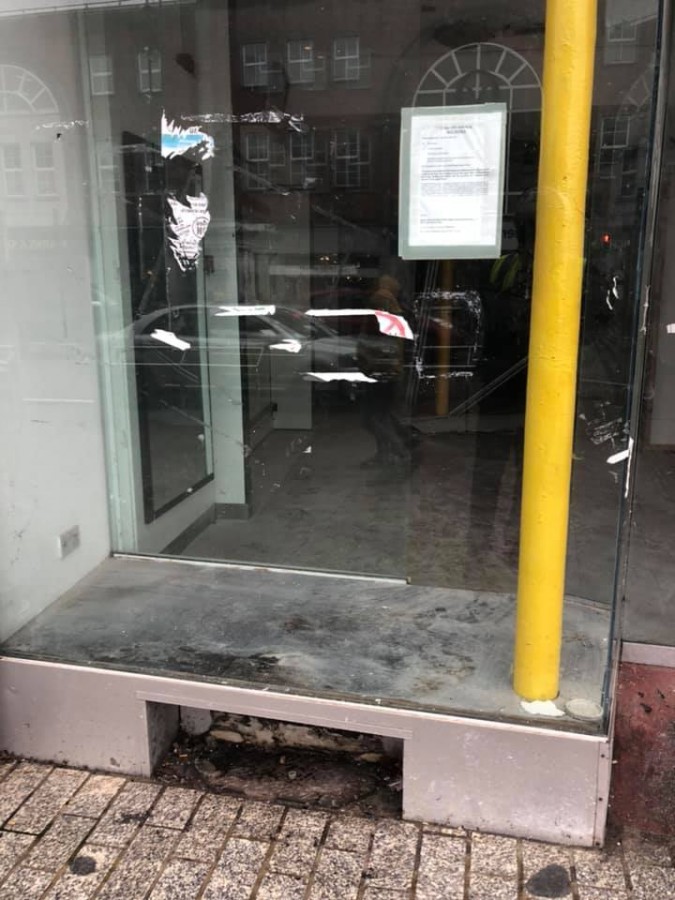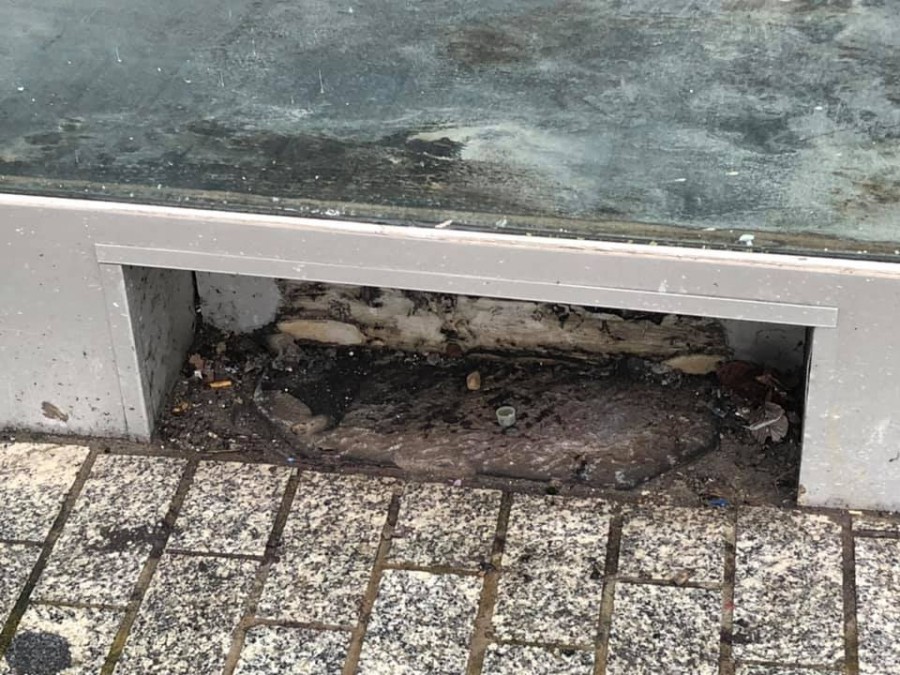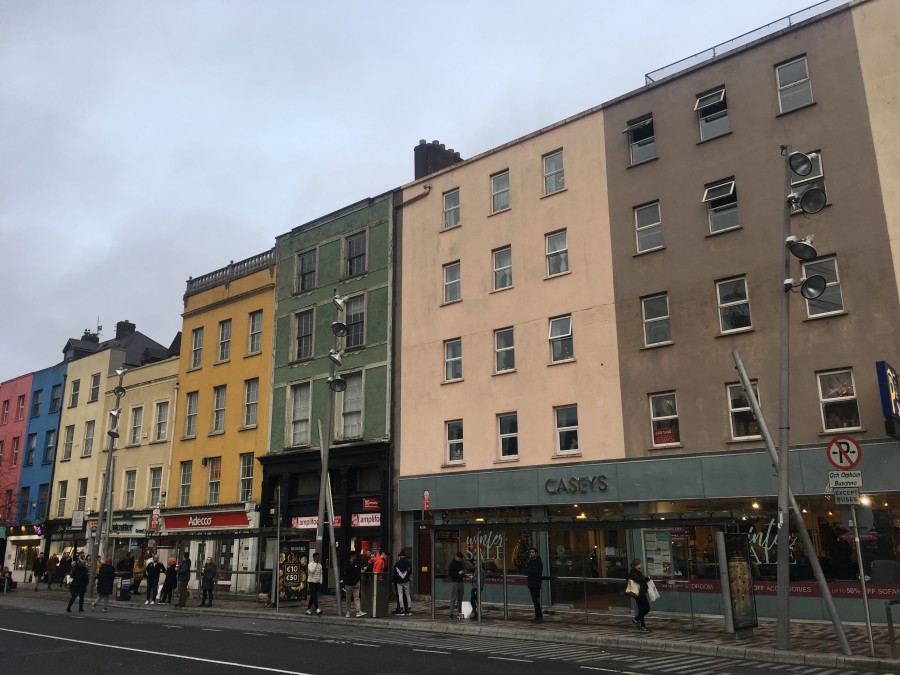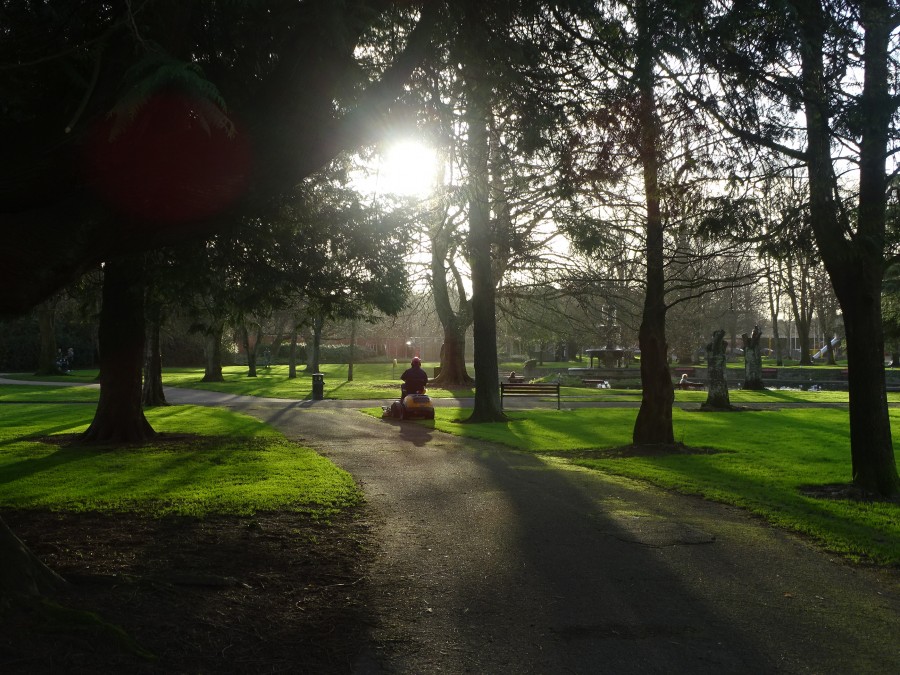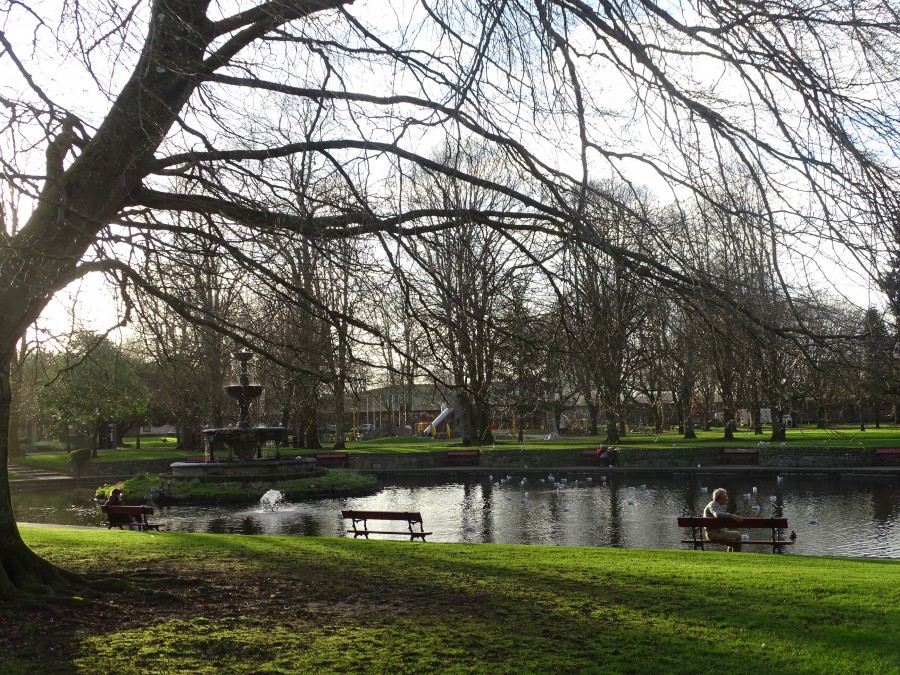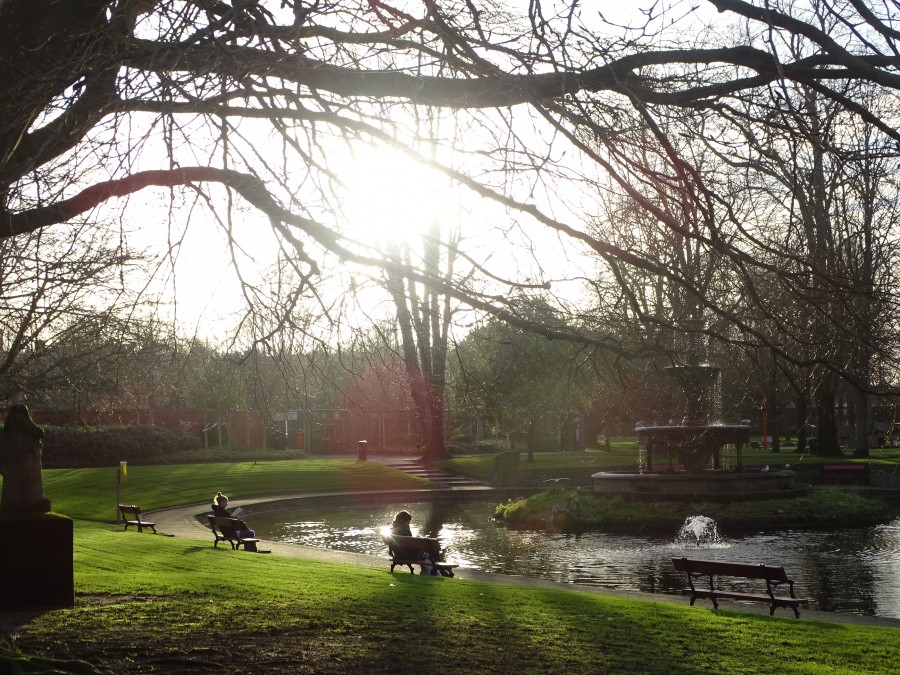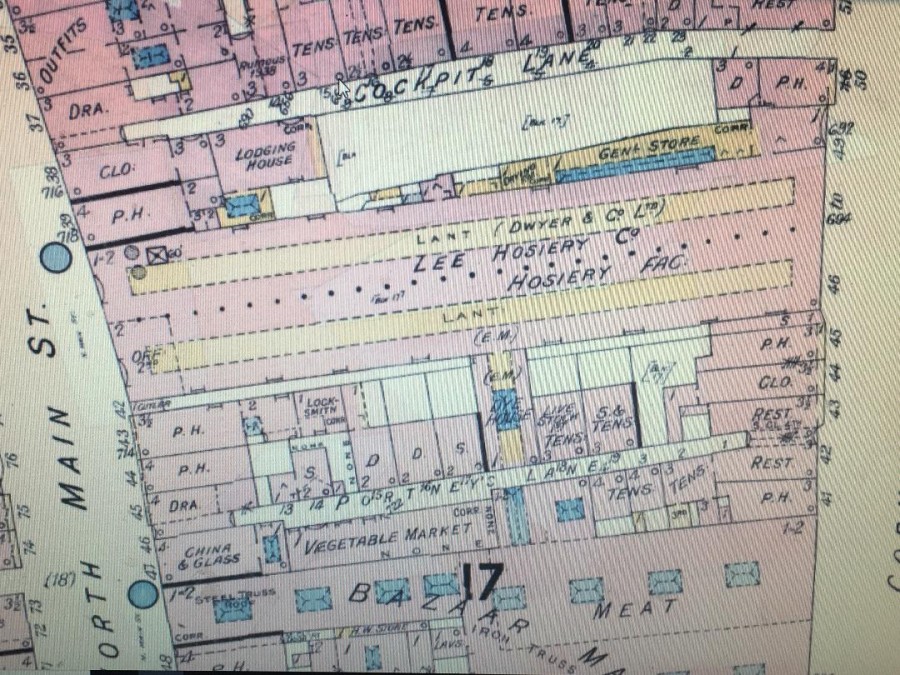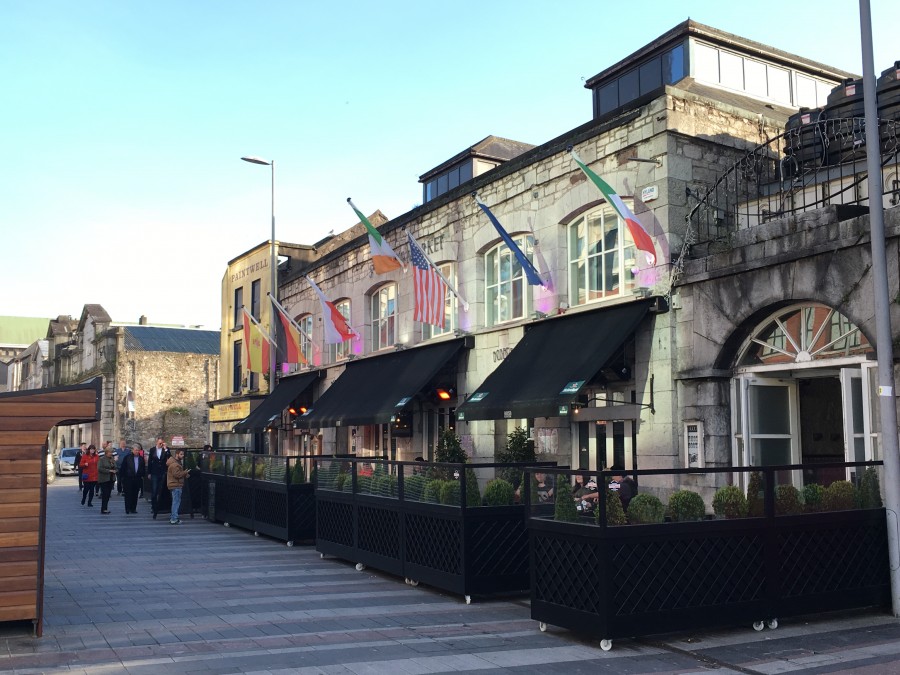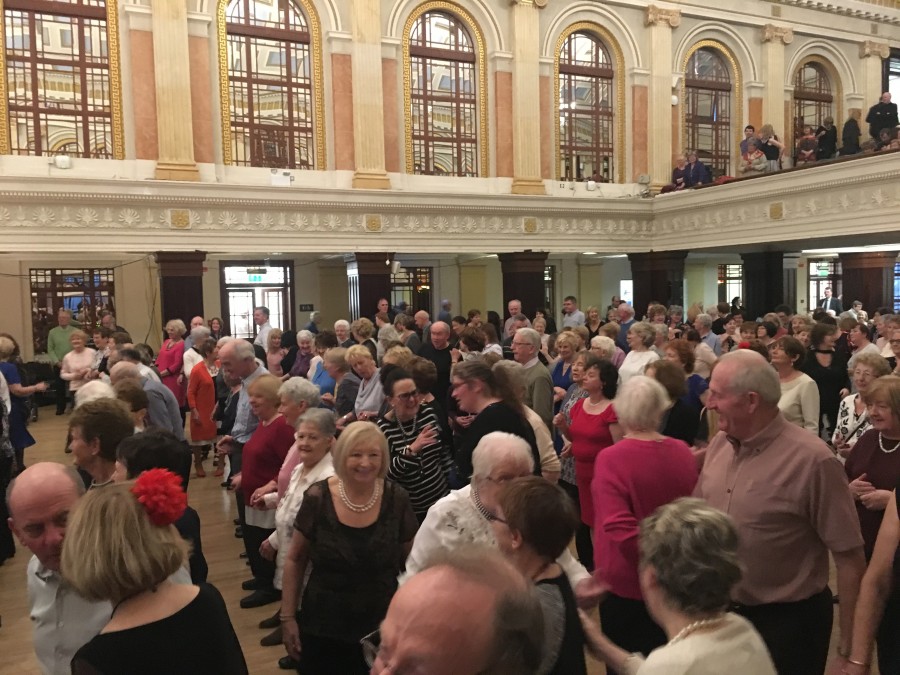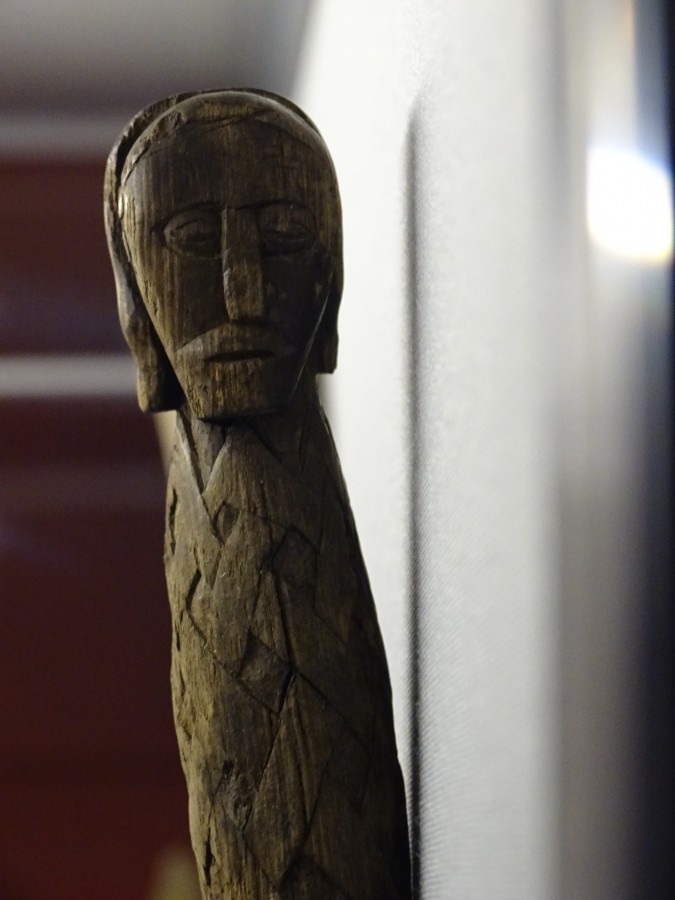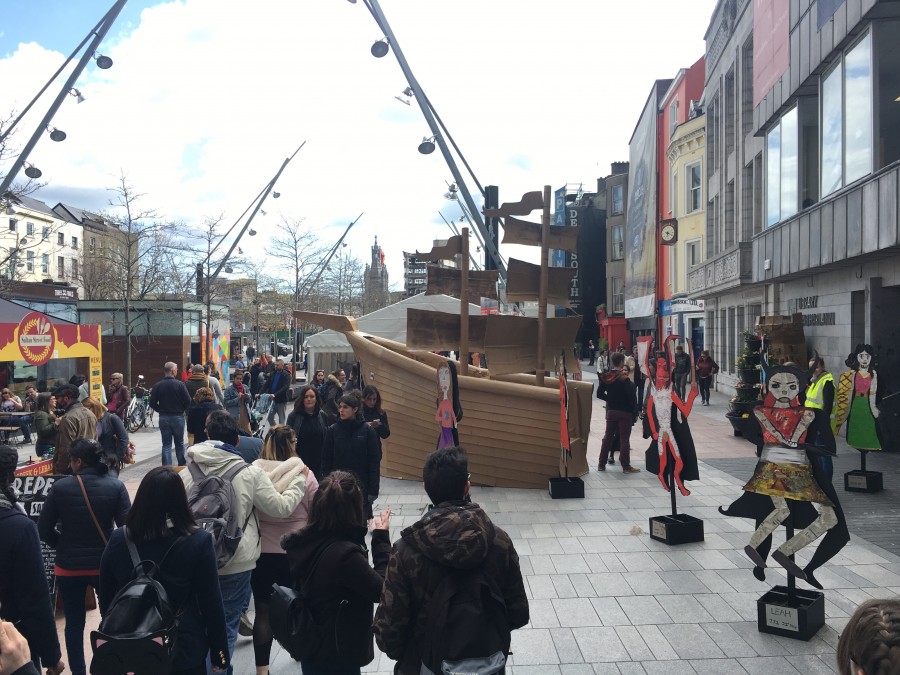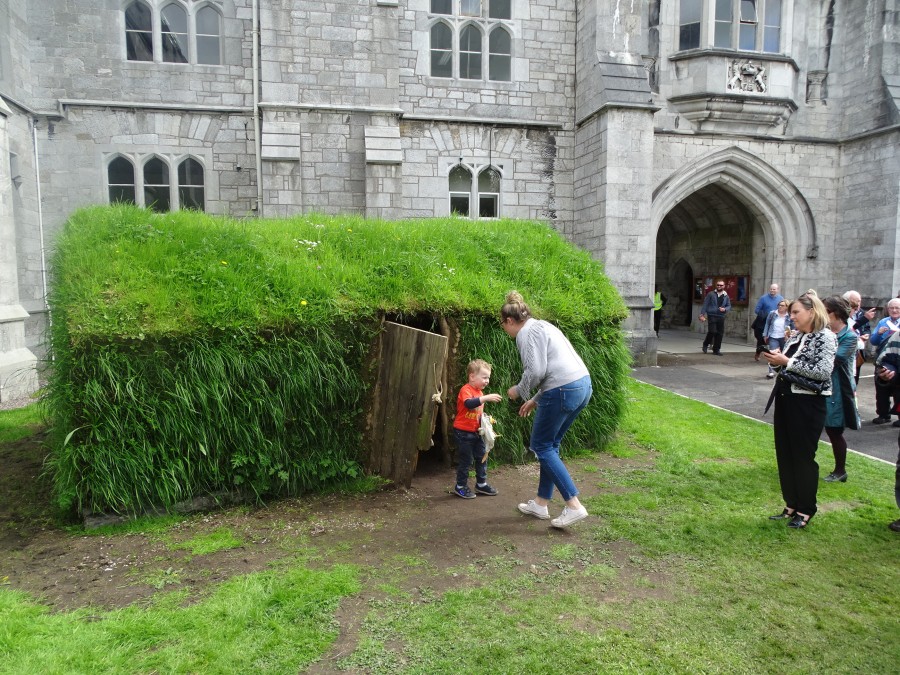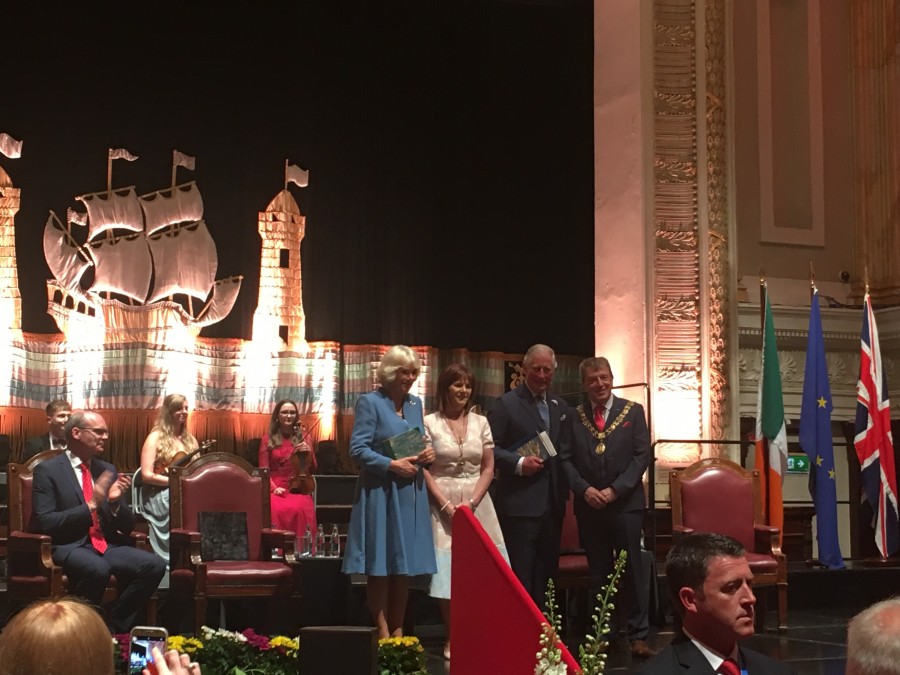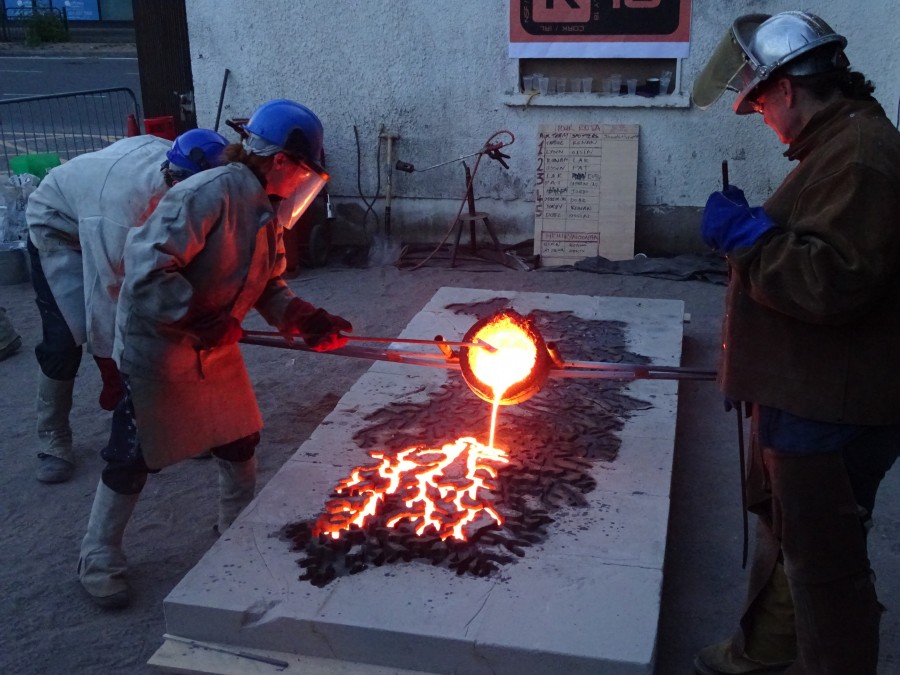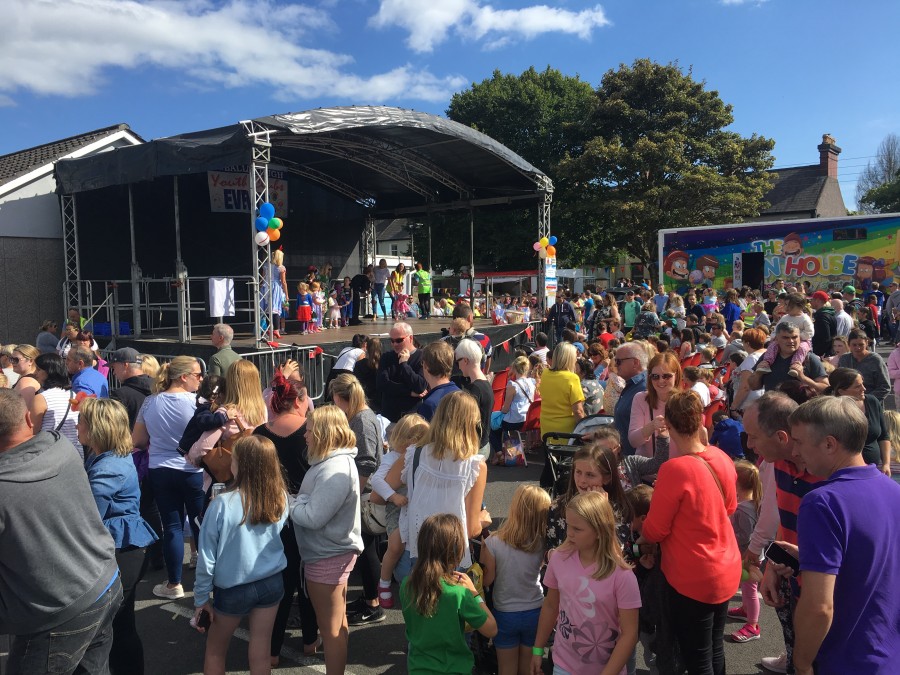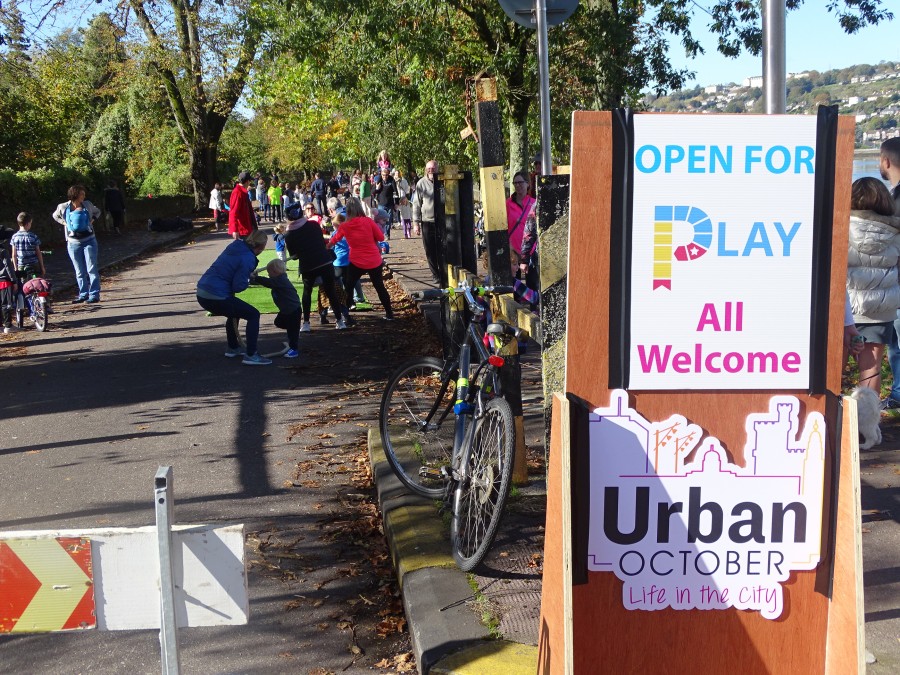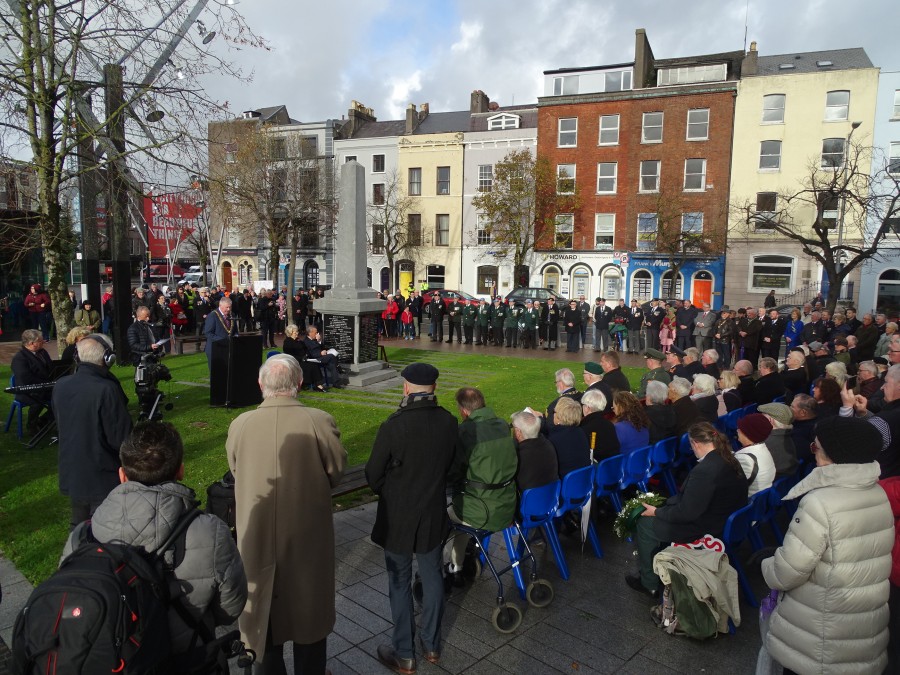Category Archives: Kieran’s Council Work
Seamus Murphy Dog Trough found, Friday 25 January 2019, 4.30pm
Update on Seamus Murphy dog trough:
Between the Garda press office & Council officials, they have noted it Has been found & will be returned to its location in the coming days; v little other info has been made available; Garda enquiries are to continue said short Garda brief.
Stolen Dog Trough made by Seamus Murphy, St Patrick’s Street, 24 January 2019
Press Comment:
“I am very saddened and furious to see this form of cultural vandalism; It is a well known piece of heritage in Cork; it has been there for nearly 60 years and it has not been inferred with in six decades- it is a disgrace that someone would come along and say “let’s knick this”- the piece has huge cultural value. Someone trying to sell this piece will be unable to because of how well written about this trough is on social media.
To remove this trough would have required some machinery as it was based in concrete- some one must have seen this trough being lifted and should report it to Anglesea Street Gardai. There is intense CCTV in the area and that should be able help identify and be able to track the culprits from St Patrick’s Street to their residence”.
Kieran’s Our City, Our Town, 24 January 2019
Kieran’s Our City, Our Town Article,
Cork Independent, 24 January 2019
Tales from 1919: Proceedings of the First Dáil Éireann
Three minutes before the time announced for the beginning of the proceedings of the first Dáil Éireann on 21 January 1919 Count George Plunkett, attended by his colleagues entered the Round Room of the Mansion House, Dublin (continued from last week’s column). They proceeded to their seats. The audience rose and indulged in loud and prolonged cheering.
A roll call of members, available from the Oireachtas archives, lists the Sinn Féin MPs in attendance: Seán T O’Kelly (College Green), P O’Maile (Connemara), J J Walsh (Cork City), Michael Collins (South Cork), Seán Hayes (West Cork), Eoin MacNeill (Derry City and National University), Joseph O’Doherty (North Donegal), Peter J Ward (South Donegal), Joe Sweeney (West Donegal), George Gavin Duffy (South Dublin), Philip Shanahan (Harbour Division Dublin), Richard Mulcahy, Clontarf, Dublin, Michael Staines (St Michan’s, Dublin), Alderman Tom Kelly (St Stephen’s Green, Dublin), Piaras Beasley (East Kerry), Dr John Crowley (North Mayo), Donal Buckley (North Kildare), Con Collins (West Limerick), J J O’Kelly (Louth County), Eamonn Duggan (South Meath), Kevin O’Higgins (Queen’s County), Count George Noble Plunkett (North Roscommon), Harry Boland (South Roscommon), James A Bourke, (Mid-Tipperary), P J Moloney (South Tipperary), Cathal Brugha (Waterford), Roger M Sweetman (North Wexford, Dr Jim Ryan (South Wexford), and Robert C Barton (West Wicklow).
Journalists from papers such as the Cork Examiner and the Irish Independent jotted down the proceedings, which were passed by a press censor. On the motion of Count Plunkett, seconded by Mr P O’Maile, Mr Cathal Brugha was moved to the chair amidst much applause. He spoke about doing important work, “the most important work that had been done in Ireland since foreigners landed in that country”. Continuing he noted: “It is also a holy work. The people of Ireland have hope and trust in God, and for that reason they might humbly ask God to give them help in the work that they had undertaken”. He then asked Fr Michael O’Flanagan to give a blessing on their work.
The Chairman then called the names of all the Irish Parliamentary representatives invited to assist the establishment of the Dáil Éireann. The Chairman highlighted that invitations had been sent to all persons elected for Irish constituencies in the December general election of 1918. There were no replies when the names of Unionist members were called and in the case of the Sinn Féin members in prison the answer “in gaol” was given”.
Mr Seán T O’Kelly then proposed the adoption of a temporary constitution. He said this constitution was a very simple one; “all the members of the Dáil have already got it in their hands, it did not require any long advocacy of it from me. It is sufficient for the time being for the purpose which the Dáil holds in view, namely, to make a permanent Republic in Ireland”. Sean Hayes seconded the motion, which was unanimously carried. The Chairman read the Declaration of Independence to be endorsed by the Dáil. The declaration was read in English by Mr E J Duggan, and in French by Mr George Gavin Duffy. It was accepted by each MP present.
On the motion of Mr O’Maillie and seconded by Dr Jim Ryan, Eamon De Valera, Count Plunkett, and Arthur Griffith were appointed delegates to the Peace Conference.
Mr J J O’Kelly read an address to the “Free Nations of the World”. Count Plunkett read the address in Irish. Mr John MacNeil, who proposed the adoption of the address, said they were not asking the people of other countries to establish a Free State in Ireland, because he deemed that the state had already been established. All they asked was that it should be recognised and guaranteed by the “Powers” which were assembled in Paris to settle the peace of the world and granted the rights of small nations. Mr J J Walsh from Cork City seconded, and the motion was unanimously carried.
The constitution of the Dáil was then read and also agreed to. It provided that the Dáil should have full legislative powers and should consist of members elected by the people from the existing constituencies; “Full Executive power shall reside in the Ministry, which shall consist of a Prime Minister selected by the Dáil, and four Ministers, namely, Ministers of Finance, Foreign Affairs, Home Affairs, and Defence. The Prime Minister shall nominate the four, and have power to deprive them of office. A Ceann Comhairle (Speaker) shall be selected, for the year by the Dáil, ‘ or a substitute if he is not present. The Ministry shall receive whatever money they require by vote of the Dáil and will be responsible to the Dáil for the monies voted”. Provision was made for the-auditing of the accounts, and the Constitution provided that was temporary, and could be changed by written resolution submitted on ten days’ notice.
Mr Piaras Beasley read in Irish, and Alderman Tom Kelly in English, the democratic programme of social and economic principles. Mr Richard Mulcahy moved the adoption of the programme. Mr Con Collins seconded the motion which was carried. The sitting was then adjourned till the following day when Standing Orders were to be under consideration. As the members of the Dáil rose in their places for the adjournment they were loudly applauded, and the cheering was renewed by the crowd outside the Mansion House when they left the building. The crowd then quietly dispersed. At night a reception was given by Mr Cathal Brugha, Speaker of Dáil Éireann.
Missed a column last year, check out the indices at Kieran’s heritage website, www.corkheritage.ie
Kieran is also showcasing some of the older column series on the River Lee on his heritage facebook page at the moment, Cork Our City, Our Town.
Caption:
981a. Archival documents on display in Cork City Museum showcasing the organisation of the first Dáil Éireann in 1919 (picture: Kieran McCarthy)
Cllr McCarthy: Tramore Valley Park will be Recreational Jewel in the Expanded City, Update January 2019
Sustained pressure to open Tramore Valley Park may yield “light at the tunnel” before the summer of this year, according to Independent Cllr Kieran McCarthy.
In response to a question on the current status of the Park by Cllr McCarthy at the last City Council meeting, it was revealed that works are well advanced to upgrade access and egress from/to the South City Link Road, enhance public lighting, increase car parking spaces and, associated landscaping. They are scheduled for completion mid to late April 2019.
On the way into the site from the South Link the City Council are segregating the traffic that is going to the recycling facility from those who will use the park. At the moment, there is one lane in and one lane out to the South link and the Council wish to put a second lane that will allow two lanes out onto the South Link.
The Chief Executive in her answer to Cllr McCarthy noted; “The park is scheduled to open at the latest in the week ending Sunday 12th May, 2019”.
Cllr Kieran McCarthy noted; “vast amounts of public money has been invested to transform this former landfill into a c.160 acre public park. I remain committed to putting pressure on the officials to open this significant park area, which will serve all of the city and beyond its boundaries. It will be a recreational jewel in the expanded city later this year”.
“It will be great to see the park opened in its first phase ensuring that family, community and park life all remains at the heart of a bigger city centre. It will be the equal of the Ballincollig regional park in the city. Family and community life will be enhanced by the opening of this enormous resource”, highlighted Cllr McCarthy.
Kieran’s Question to CE and Motions, Cork City Council Meeting, 14 January 2018
Question to CE:
To ask the CE for an update on progress on Tramore Valley Park ? (Cllr Kieran McCarthy)
Motion:
That Cork City Council calls upon Minister Zappone’s Department to acknowledge Adoptee Identity Rights and allow Adoptees access to their own information on Health and Heritage in line with the equality and personal autonomy rights of other citizens (Cllr Kieran McCarthy)
Kieran’s Our City, Our Town, 10 January 2019
Kieran’s Our City, Our Town Article,
Cork Independent, 10 January 2019
Tales from 1919: Permits, Parcels & Prisoners of War
Nearly three hundred men, natives of Munster who had been prisoners of war, were given a warm welcome on 7 January 1919 at the Imperial Hotel, Cork, by the members of the Cork branch of the Irish Women’s Association. A special food permit was obtained to have a dinner, which together with entertainment were held in the decorated ballroom. The event was described in detail by the Cork Examiner and gives an insight into the support base back home in Cork whilst Cork soldiers were on the front line. The Branch also had regular meetings, which were minuted and published in the local press. The January 1919 event also took place against the backdrop of a campaign by Westminster’s Ministry of Labour to get returned soldiers and officers back into their old jobs before they left.
Those present at the Cork branch dinner were representatives of all the Irish uniforms – the strongest contingent being from the Royal Munster Fusiliers and many others from regiments, corps, and the Navy. The Fusiliers had lost nearly 180 officers and over 4,000 men in the World War. Over 10,000 had seen the inside of German Prisoner of War camps. In the ballroom, the gathering was one of war worn soldiers, some of whom had over 25 years’ service and who had fought and survived many times before the war they had just returned from. Others had answered the call to help from 1914 onwards. Many had been prisoners from 1914, with a few been captured in 1918. Some amongst them were maimed and crippled from wounds received in battle. Some suffered from the treatment they were subjected to in Germany. Those present were appreciative of the work of the Cork Women’s Association who supplied parcels to the frontline.
The Cork Branch of the Irish Women’s Association was founded by the Countess Bandon on Christmas week in December 1915. The volunteer work was organised and led by Mrs Ethel Helen Peacocke from Skevanish House, Innishannon (wife of Lieutenant Colonel Warren Peacocke, who was executed as a suspected spy of IRA activities in 1921). The Cork branch first sent parcels to a small number of Corkmen who were prisoners of war from the 6th and 7th Battalions of the Royal Munster Fusiliers in Salonika Greece. The remainder went to France for the benefit of the Cyclist Corps of the 1th Division. The number of men catered for grew as well as the content of the parcels from food initially to gloves, caps, pocket handkerchiefs, vests, milk tablets, soup tablets, soap, socks, foot powder, playing cards books to hurley sticks, balls and footballs. Parcels were posted once a fortnight to Limburg POW camp in Germany through the help of the British Diplomatic Office in Berne, Switzerland and through the Irish Women’s Association, Kensington Palace, London. From time to time, the Cork branch sent parcels to the Munster men in the fighting zone. It also provided parcels to soldiers of the Royal Irish Regiment and Cork men in the Connaught Rangers. The army supply of many provisions was regulated by the information received from the commanding officers as to what was most necessary.
All the parcels could not be done, without funds. To meet the expense Mr James F McMullen, Branch member (and City Engineer), organised two Munster wide flag days. The first, which took place in December 1915, realised over £1,000, and the second, in November 1916, raised £651. After these, the scheme called “Godfathers and Godmothers” was instituted. This simply meant that the funds for each prisoner’s parcels were supplied by the godfather or godmother.
Ethel Peacock managed the Cork branch well, ably assisted by many willing volunteers who devoted their time. Her able co-worker was Miss Niva Delacour Gregg. The branch was given a premises at 37 Grand Parade on Christmas week 1915 to pursue their work. At the depot, items as they arrived had to be classified, made up into parcels, addressed and dispatched. At the peak of its work, up to 77 parcels were sent fortnightly. Besides keeping up a constant supply of parcels the branch were able to send £100 to General Hickey in France to assist in buying a motor cinema, to show short films for the Irish regiments at the front, and during Christmas 1918 £100 was also sent to France to help in providing a Christmas dinner for the Munster Fusiliers. In addition, James F McMullen on behalf of the Association sent substantial subscriptions to Lady McDonald and the Hon. Anne McDonald, in London, for the Irish Women’s Association, which was doing similar work for Irish soldiers from other Irish provinces.
When the armistice was signed, and the prisoners began to arrive home, the Cork Branch decided to devote the funds remaining on hands to provide dinner and entertainment on 7 January 1919. Before and during the dinner the Rev Mr Nicholson’s string band played an entertaining programme. Photos were taken by Messrs Guy and Co, and General Travers welcomed the men and thanked the ladies for their work. The comedy troupe, the King’s Jesters, had a two hour programme.
Most of the food was the gift of generous donors, and each man was given cigarettes and a box of matches. Ethel Peacocke expressed the wish that any other Munster men in any regiment or corps who had had been prisoners would communicate with her at the Association’s depot, 37 Grand Parade, Cork, as it was intended to host another event for them (on 11 February 1919). Before the event concluded the guests were given tea, and with the singing of “God Save the King” the event was brought to a conclusion. The Cork Branch closed it depot at its final meeting on 22 March 1919.
Missed a column last year, check out the indices at Kieran’s heritage website, www.corkheritage.ie
Kieran is also showcasing some of the older column series on the River Lee on his heritage facebook page at the moment, Cork Our City, Our Town.
Caption:
979a. Grey building on right, Caseys, marks 37 Grand Parade, former depot of the Cork Branch of the Irish Women’s Association, 1915-1919 (picture: Kieran McCarthy)
Sunset at Fitzgerald’s Park, Cork, 8 January 2019
Kieran’s Our City, Our Town, 3 January 2019
Kieran’s Our City, Our Town Article,
Cork Independent, 3 January 2019
Tales from 1919: The Future of a Shell Factory
Welcome to Our City, Our Town for its 20th year. The official anniversary is in October of this new year. I wish to continue exploring life in Cork during the period 1916-1921. The back issues of this column, which explored the period from 1916 to 1918 are on the index of my website, www.corkheritage.ie and the articles from this column from the last ten years are now online and accessible to read. Before that many are published in book format and the titles of these books can be viewed on the website. In addition, I post extra articles and pictures on my heritage facebook page, Cork Our City, Our Town or check out my twitter page at @cllrkmac.
The first week of January 1919 coincided with the ongoing controversy of the ceasing of the Cork National Shell Factory and finding a future use for it. The work of closing down the Irish munition factories begun shortly after the cessation of the First World War in late November 1918. The 1 January 1919 coincided with the public call by the Ministry of Munitions, London that the plant machinery of the respective Irish and British munitions factories would be advertised for public sale and buildings leased by local owners such as Corporations to new leasees. The Government authorities wished not to have role in picking the new owners but would pass on interested business interests to the relevant owners.
Staff at Dublin, Cork, Waterford and Galway were to be dispensed with. The staff of the Dublin factory, which at one time numbered over 1,500 were all been paid off, except for a small number required to catalogue the considerable machinery and stock. The value of the machinery in Parkgate factory exceeded £100,000. Most of it was not suitable for private work – it being impracticable to attempt to adopt shell making machines to other general uses. The machinery was to be sold as scrap.
Another effect of the closing down of the Parkgate Street Factory was the freeing for industrial use of a large quantity of gas and electric power. When the factory was in full swing the gas consumed was at the rate of over 6,000,000 cubic feet per annum, while electricity was being used at the rate of 250,000 units a quarter. As big extensions were in progress when hostilities ceased, the amount of gas and electric current required would have been considerably more. The freeing of this amount of power was to greatly benefit, industrial firms in Dublin, who because of the coal shortage had their supplies considerably reduced.
There were about 150 employees in the Cork Shell Factory, which opened in June 1916. By December 1916, the scale of the wages paid to the girl workers was 10s 6d per week of 45 hours as probationers. At the conclusion of the probationary period, they were to take their places in one of the three eight-hour shifts, when their wages according to the shift in which they were engaged, namely – those on the shift from 6am to 2pm received 2s 6d per day, 2s 9d per day if on 2pm to 10pm shift; and 3s 3d per day if on the shift from 10pm to 6am. At its maximum capacity there were 42 machines, chiefly lathes used for the manufacture of 4.5-inch shells. Elsewhere, there were over 100 hands employed in the shell factory at Galway and 600 workers found remunerative employment in the Waterford Cartridge Case Factory.
Schemes were developed for the utilisation of the four factories for commercial purposes, but no definite pronouncement was expected immediately in regard to their future. An offer was made for the Cork factory by a Dublin trader and it was favourably considered by the Ministry of Munitions. However, it did not meet with local approval and the offer fell through. At the Tolls and Markets Committee of Cork Corporation on 1 January 1919, reference was made of the Hammond Lane Foundry Company Ltd, Dublin looking for a lease of the premises known as the Cork National Shell Factory, 40-41 North Main Street, which extended to Corn Market Street. The matter fell through owing to a remark made at a Council meeting and broad opinion that the building should be leased to a local firm. The proposal was to employ approximately a hundred men.
By late June 1919 the lease of the factory in its entirety was taken over from the Corporation of Cork in association with the Ministry of Munitions by Mr Richard Woodhead, who acted on behalf of the Ford Company. The purchase comprised the entirety of the valuable electrical plant, machinery, compressor, and accumulators. It was the specific intention of Mr Woodhead to make the factory a depot for repair work for the South of Ireland for Fordson farm tractors and Ford cars. To that end considerable money was expended in the installation of the most up-to-date plant, and the entire building was altered and renovated. The plant aimed to employ 100 people and trade under the name “City Garage”. The firm was to have its own petrol pump inside and outside the premises and have a modern hydraulic tyre press. The business survived 1921 and during the 1920 saw two lessees, first the Universal Motor Company, circa 1924 to 1929 and then the Lee Motor Company, c.1930s onwards.
Happy New Year to all readers of the column.
Captions:
978a. Section of Goad’s insurance plan of North Main Street and Cornmarket Street, 1938 showing Dwyer’s’ Lee Hosiery Company, former site of Cork National Shell Factory (source: Cork City Library).
978b. Former site of Cork National Shell Factory, now the Bodega on Cornmarket Street; the factory site stretched to North Main Street (picture: Kieran McCarthy)
A Year in Review: Heritage, Memory & Culture in Cork, 2018
January 2018, A Light in the Winter: Lord Mayor’s Tea Dance at Cork City Hall, with the Cork Pops Orchestra under the baton of Evelyn Grant, with Gerry Kelly, and singer Keth Hanley; next tea dance on 27 January 2019.
February 2018, What Lies Beneath: Archaeological discoveries on the proposed Event Centre site by Dr Maurice Hurley and his team are revealed at packed out public lectures; they unearth objects and housing dating to the 11th and 12th Century AD; there is an ongoing exhibition in Cork Public Museum in Fitzgerald’s Park.
March 2018, Upon the Slopes of a City: Storm Emma creates a winter wonderland.
April 2018, A Safe Harbour: Cork Community Art Link do another fab display of the Cork Coat of Arms on the Grand Parade providing a brill entrance to Cork World Book Fest 2018.
May 2018, The Truth of History: A reconstruction at UCC of a fourth class cottage from the times of Ireland’s Great Famine laids bare the realities of everyday life for many people. It was built to coincide with Cork hosting the National Famine Commemoration at UCC.
June 2018, The Challenges of the Past: Charles, Prince of Wales, visits Cork. https://www.princeofwales.gov.uk/speech/speech-hrh-prince-wales-civic-reception-cork-ireland
July 2018, Shaping a Region: US artist Tamsie Ringler begins pouring the molten ore for her River Lee iron casting sculpture at the National Sculpture Factory, Cork.
August 2018, The Beat of Community Life: Ballinlough Summer Festival organised by Ballinlough Youth Clubs at Ballinlough Community Centre reaches its tenth year; its Faery Park and Trail also grows in visitor numbers.
September 2018, On The Street Where You Live: Douglas Street AutumnFest brings businesses and residents together once again for a super afternoon of entertainment, laughter and chat. The ongoing project wins a 2018 national Pride of Place award later in December 2018; & a new mural by Kevin O’Brien and Alan Hurley of first City Librarian, James Wilkinson, who rebuilt the city’s library collections after the Burning of Cork, 1920.
October 2018, The Playful City: Cork’s Dragon of Shandon is led by a host of playful characters and the citizens of the city.
November 2018, Lest We Forget: Marking the centenary of Armistice day at the Fallen Soldier Memorial on the South Mall for the over 4,000 Corkmen killed in World War 1, led by Lord Mayor of Cork, Cllr Mick Finn.
December 2018, A City Rising: the Glow Festival on the Grand Parade & in Bishop Lucey Park attracts large numbers of citizens and visitors to Ireland’s southern capital.

